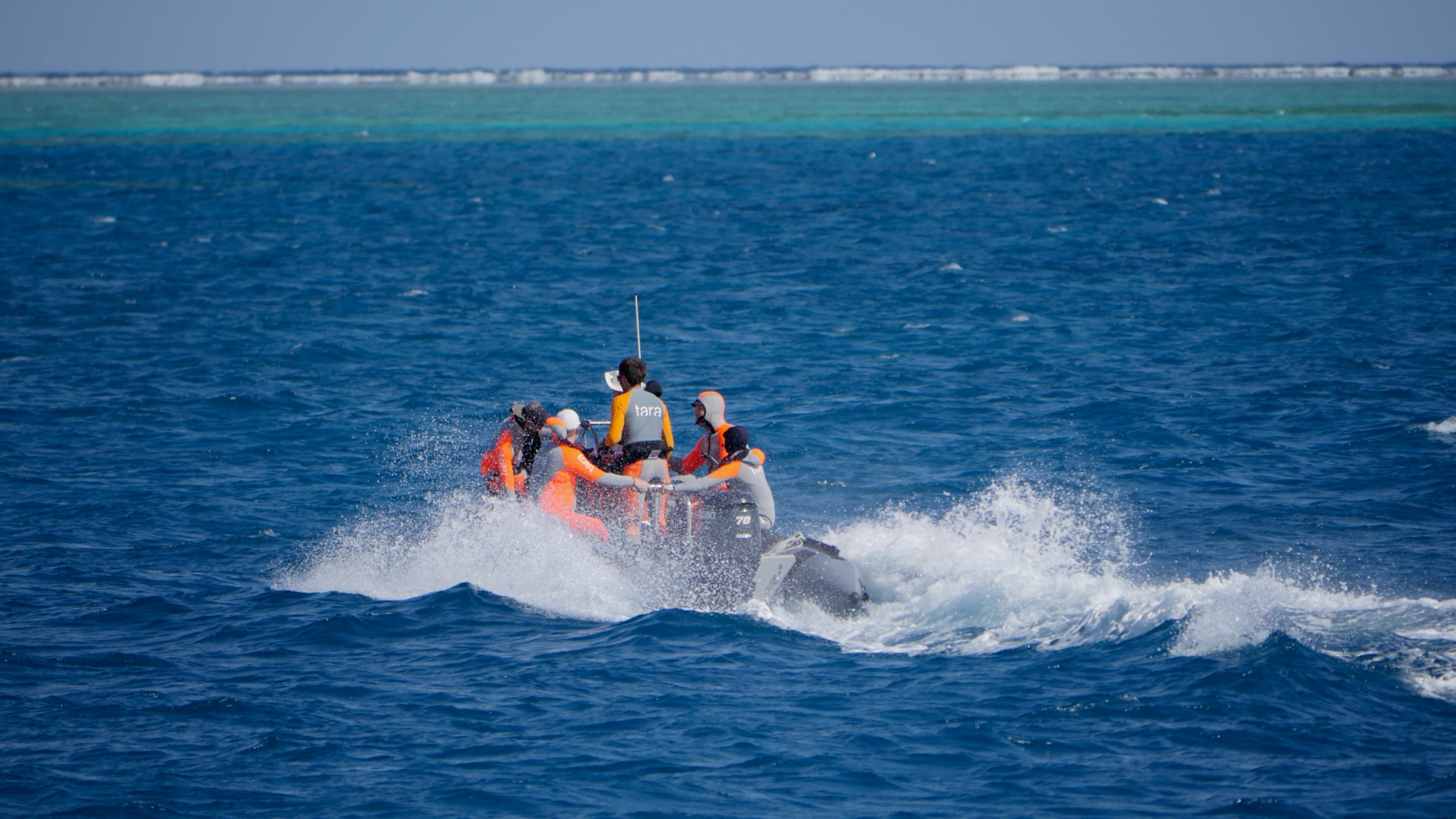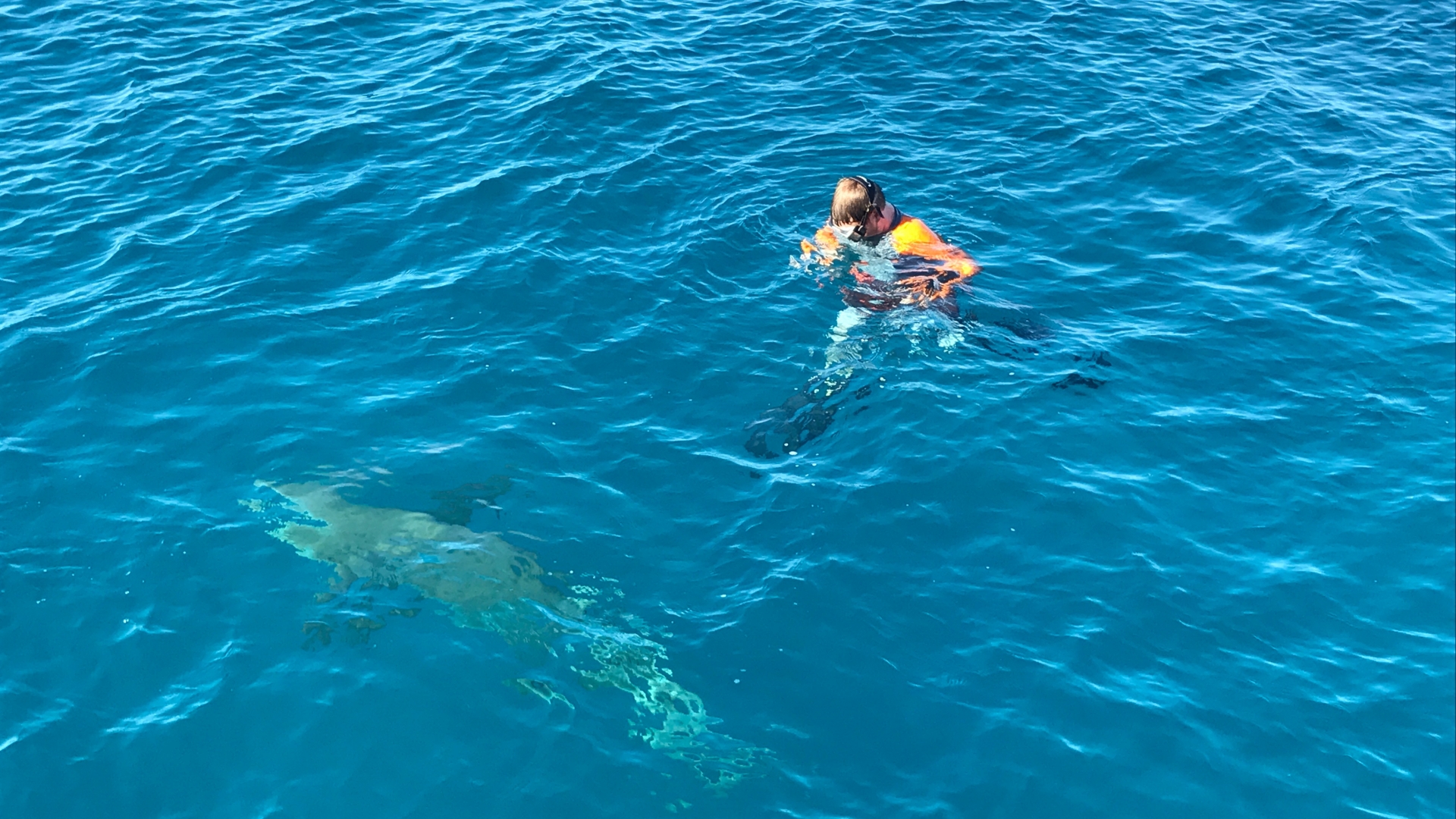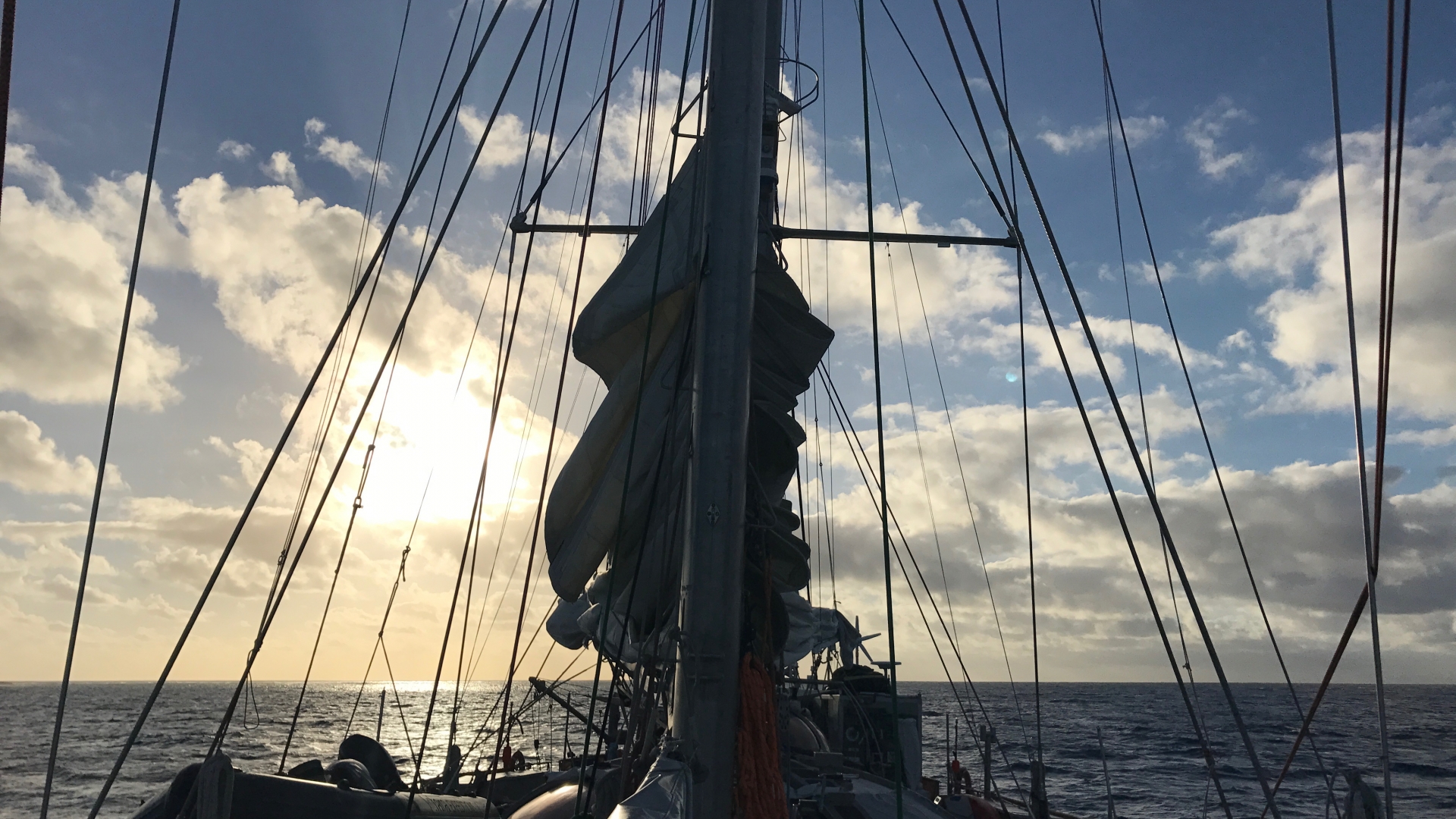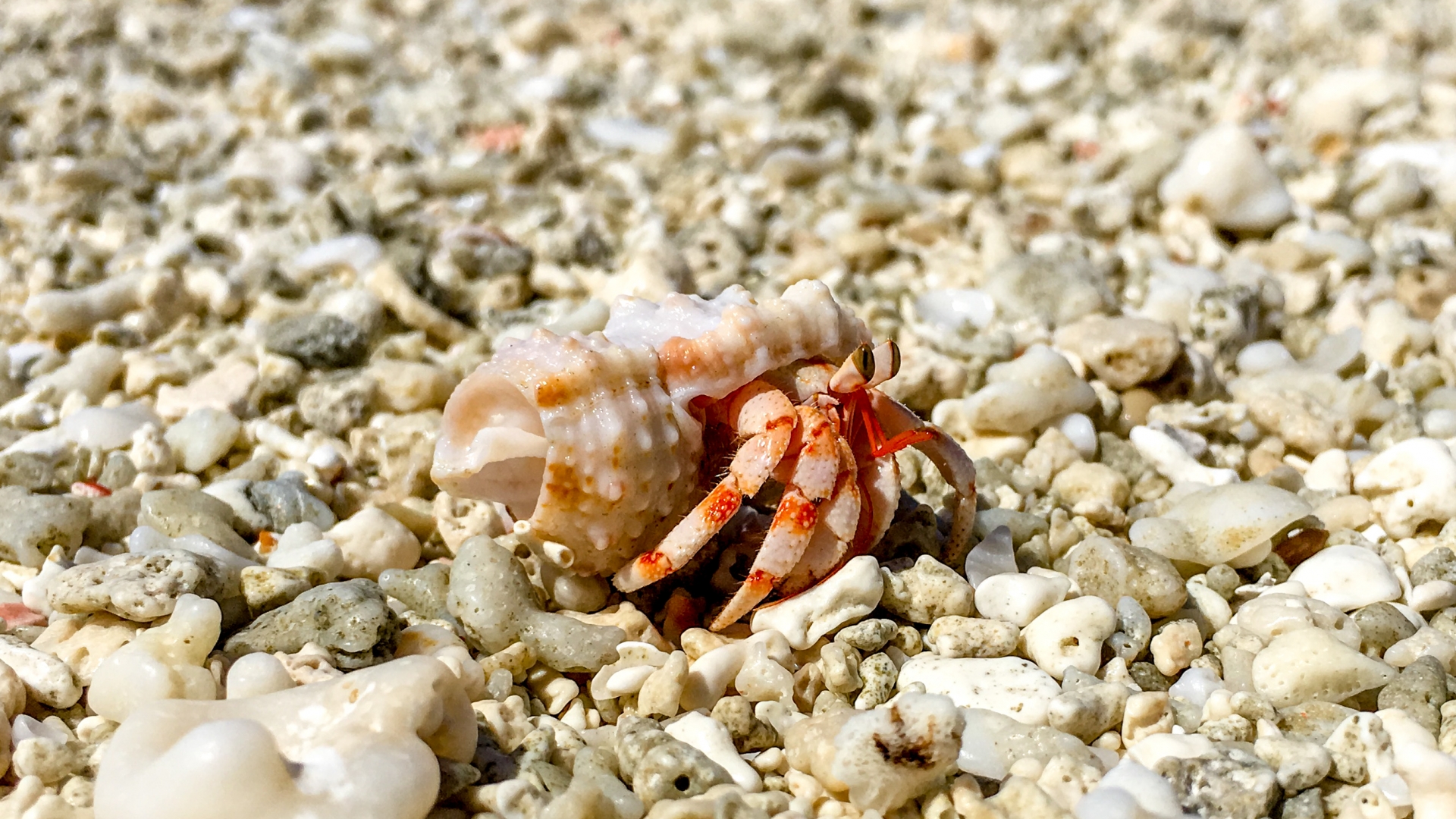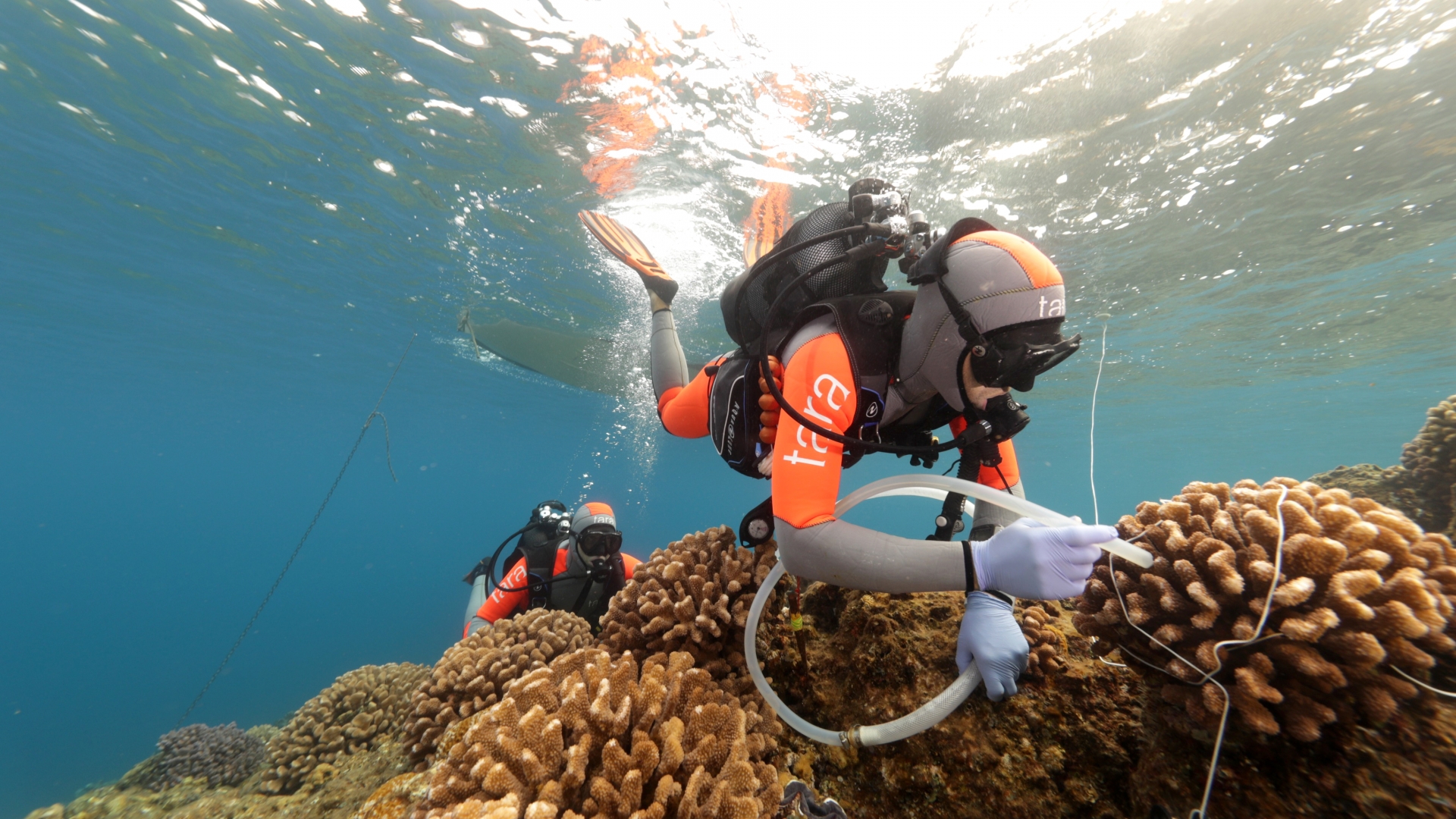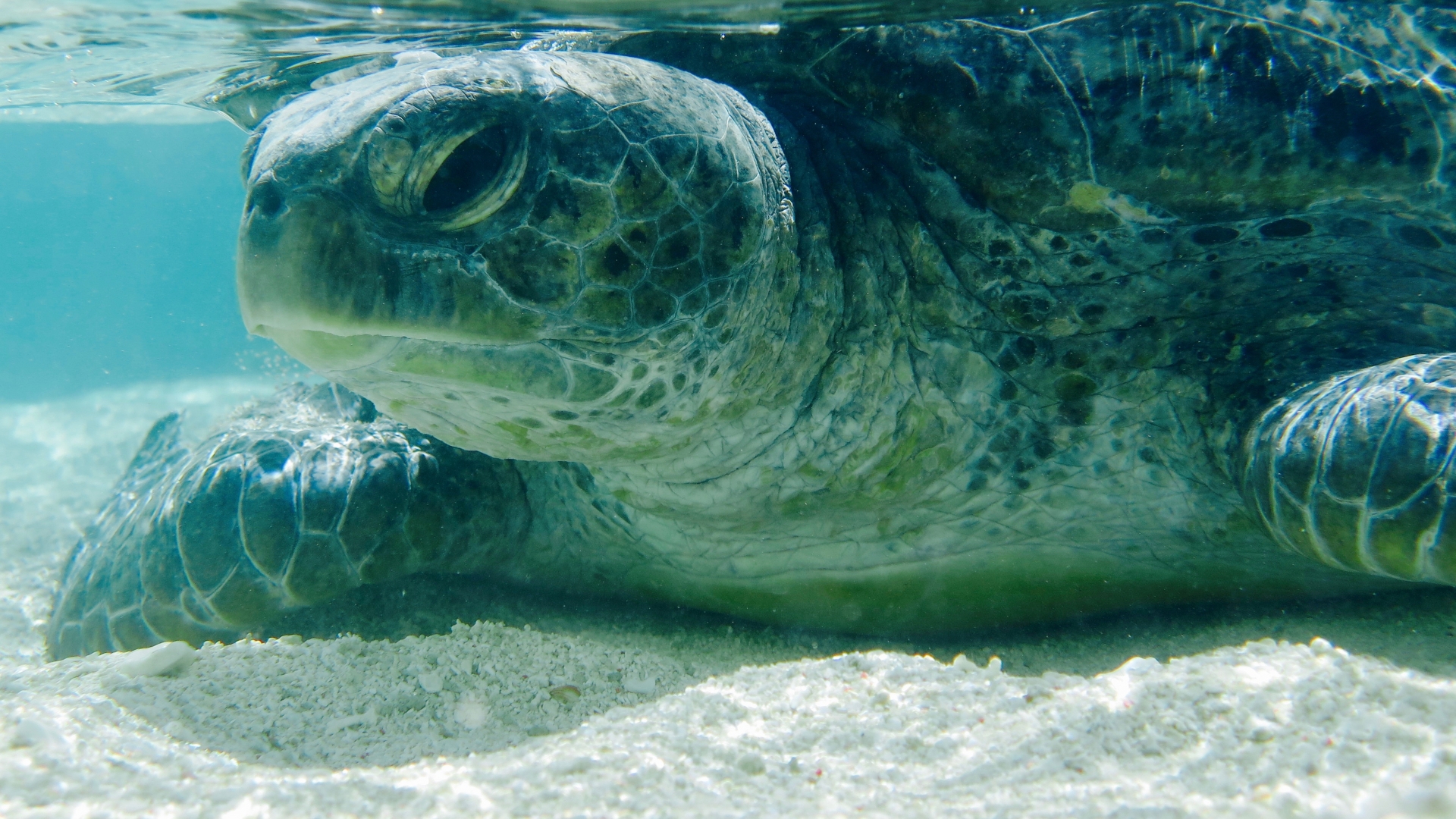- 1The rainforest of the oceans
- 2Coral reefs are the tropical rain forests of the oceans
- 3Expedition to the Pacific Ocean
- 4the travel route
- 5The ship
- 6Pioneering spirit
- 7Pioneering spirit (2)
- 8Impressions
- 940.000 samples
- 10Interdisciplinary cooperation
- 11Underwater sampling
- 12Coral, a natural born “multiplayer”
- 13“native community”
- 14Real “powerhouses”
- 15Just one degree Celsius
- 16Extent of coral extinction
- 17Coral “graveyards”
- 18Video "Our Ocean, Our Future"
- 19Essential for the existence of millions of species
- 20“Our generation must solve the issue of climate change.”
- 21Genetic adaptability of corals
- 22Impressions (2)
- 23Publications
- 24Publications (continued)
- 25Further Links
- 26picture proof
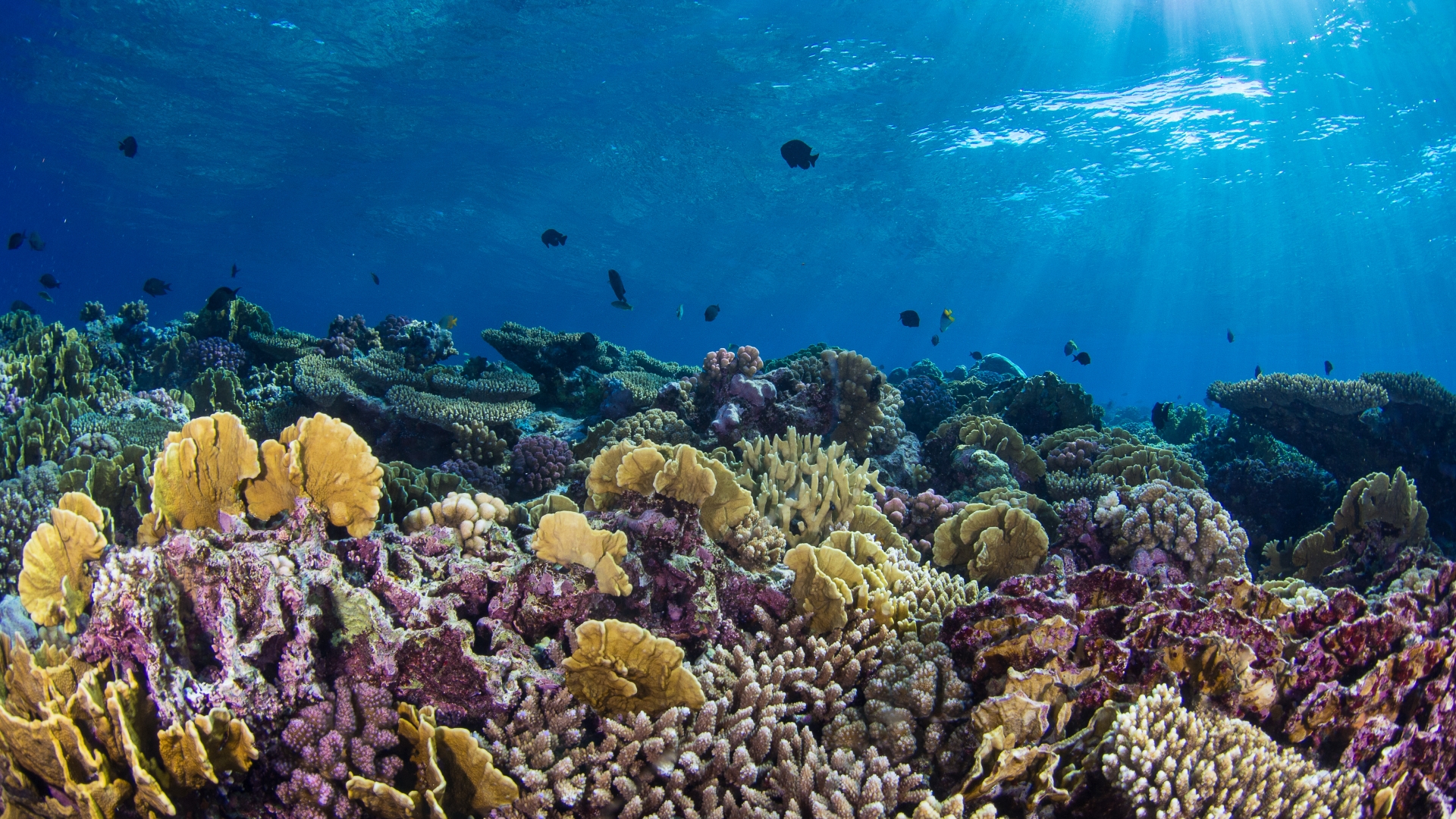
The rainforest of the oceans
Coral reefs are the tropical rainforests of the ocean: They are home to about one third of the world’s marine species and a central factor for the global marine ecosystem. Unfortunately, coral reefs are just as endangered as the rainforests. Because of climate change, corals are now disappearing on a massive scale. The fear is that they may even go extinct by the end of this century. On board the schooner Tara, a team of scientists travelled the Pacific Ocean for more than two years in order to study the environmental and survival conditions for coral. Biology professor Christian Voolstra from Konstanz, is one of the coordinators of the Tara Pacific Expedition.
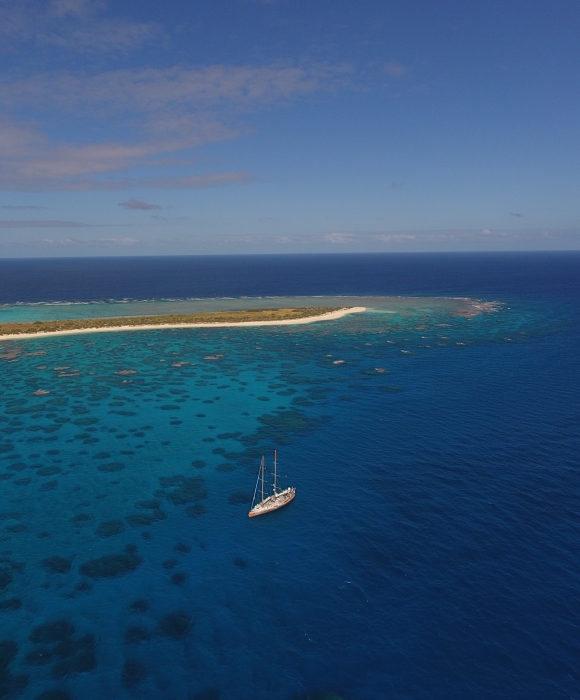
Expedition to the Pacific Ocean
The Tara left France on 28 May 2016 and sailed throughout the Pacific Ocean for more than two years. The team’s route took them from the Panama Canal to Japan and from New Zealand along the coast of China to Canada. The Tara travelled a total of 100,000 km, across eleven time zones, visiting 40 archipelagos along its way. The ultimate purpose: to understand and document corals and their livelihood in the Pacific.
Each and every factor and environmental condition that may affect coral were to be documented by the Tara Pacific Expedition in order to understand their effects: all the symbiotic relationships between corals and their associated (micro-)organisms, as well as all the plant and animal species that the corals provide a habitat for, even the temperature and chemical composition of the water was documented.
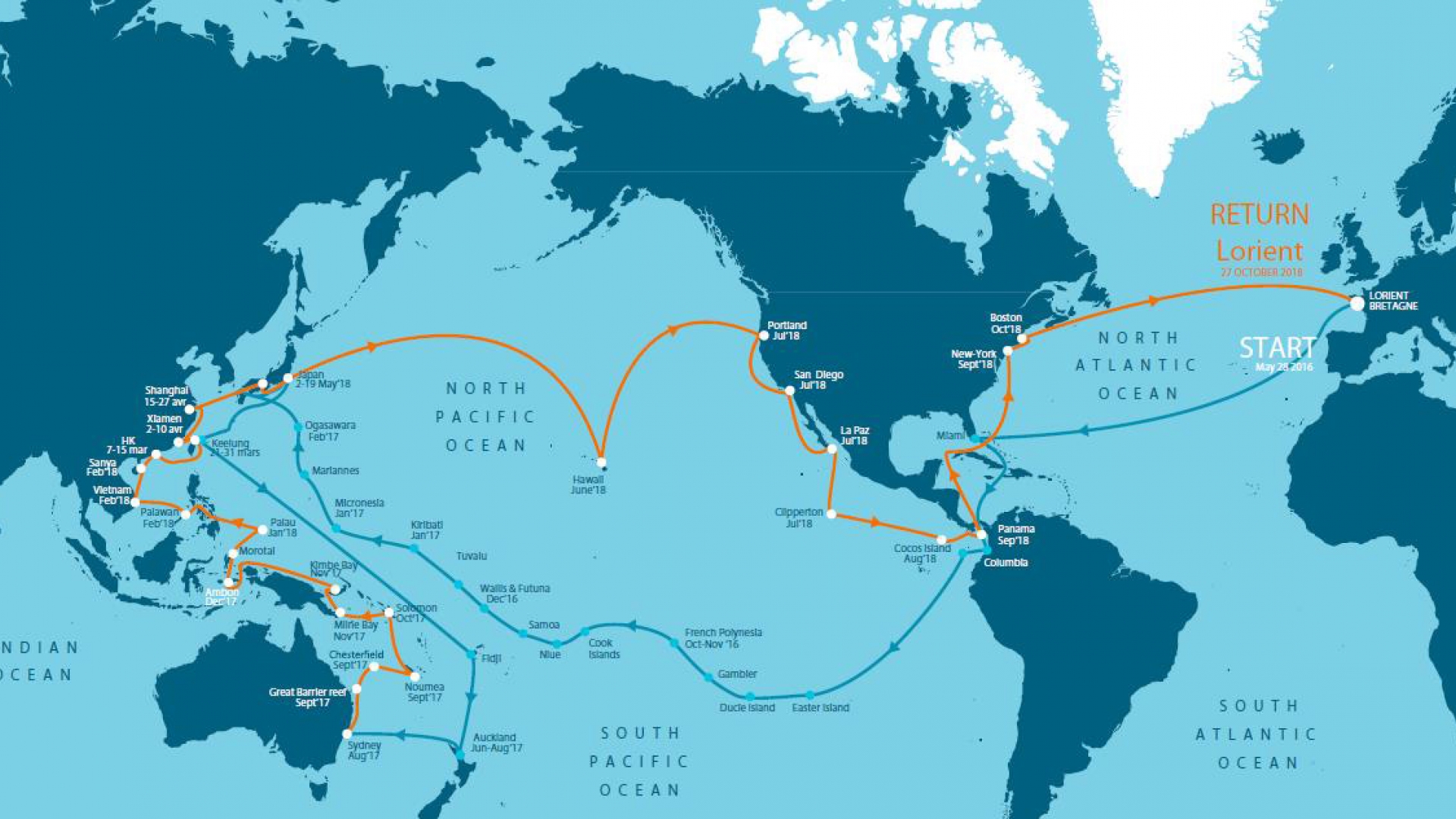
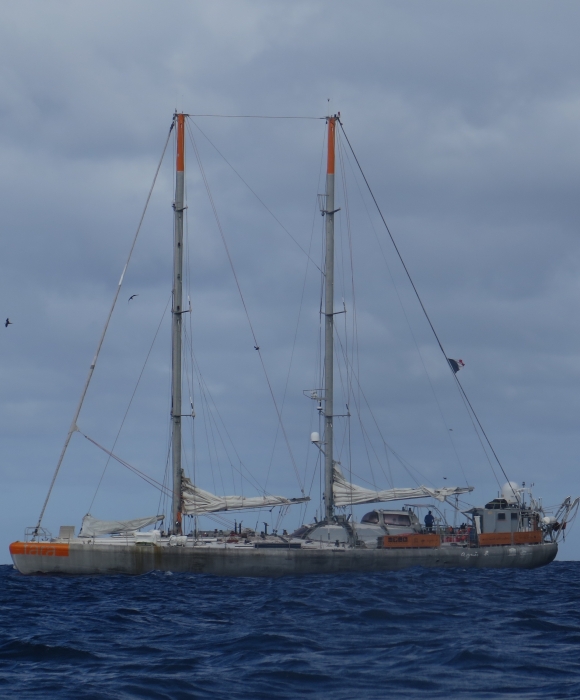
The ship
The Tara is a schooner with a particularly flat stern – particularly well suited to travelling across coral reefs without damaging them. During the Tara Pacific Expedition, the vessel was home to a total of 70 scientists from eight different countries. One of the crew’s leaders was Professor Christian Voolstra, Professor of Genetics of Adaptation in Aquatic Systems at the University of Konstanz.
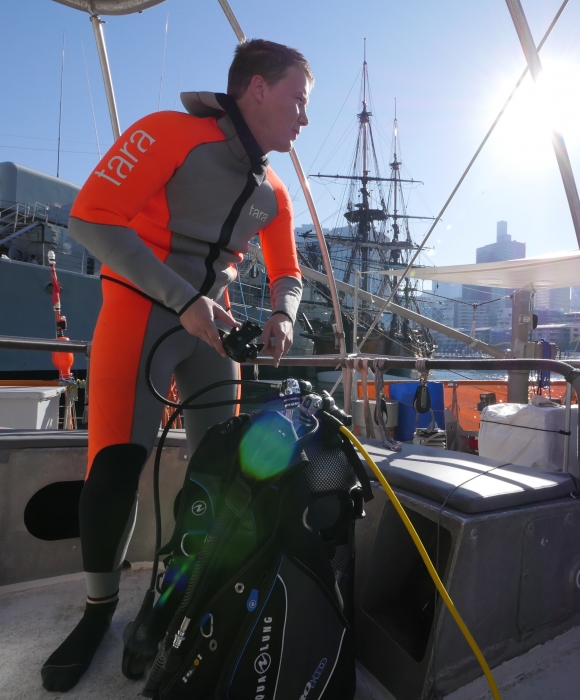
Pioneering spirit
“It was a dream come true”, Christian Voolstra reflects on the monumental expedition. Up to this point, there had not been such an all-encompassing survey of the living conditions for coral. During the two-year project, Christian Voolstra was able to dive places previously untouched by humans. He saw corals that were bigger than a house and older than 10,000 years. He swam with sharks and collected data in the Pacific’s reefs that will form the basis for decades of research.
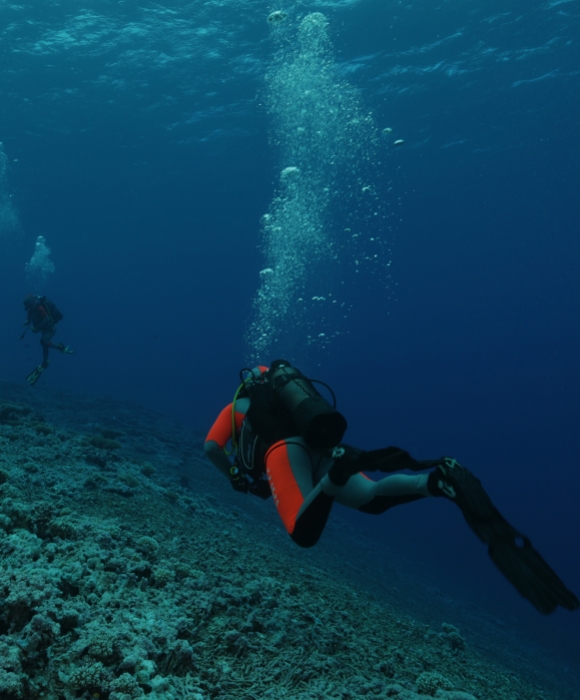
At the same time, he encountered a nightmare: He saw entire coral reefs killed by climate change. He witnessed how a third of all existing coral disappeared in less than three years. Instead of giving up, he redoubled his research efforts: to understand the living conditions of coral and to find a way for them to survive climate change.
His largest task is still to come: “Each hour in the water means 100 more hours in front of the computer”, Voolstra says. After the expedition is over, the actual research work starts: All the samples collected need to be analyzed scientifically using the most modern techniques.
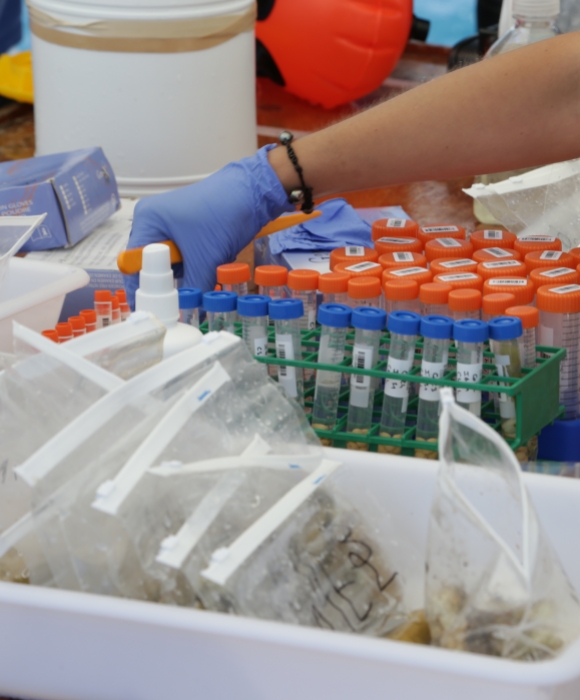
40.000 samples
Over the course of the Tara Pacific Expedition, 40,000 research samples were collected from coral reefs around the entire Pacific Ocean. Each one consists of multiple individual samples, carefully packaged and labelled with a barcode. They include samples of the coral, the algae and microorganisms they have a symbiotic relationship with as well as the water and its chemical composition. The water’s temperature, the date and time each sample was taken are also included as metadata. Teams of scientists around the world are now working on evaluating these samples.
Christian Voolsta feels "like a child in a toy store”, in the face of this mountain of data, a treasure trove for complex analyses. “It is an absolute dream for any scientist. So many samples and big data allow us to recognize relationships that we wouldn’t otherwise be able to uncover”, Voolstra says.
There is a broad spectrum of scientific questions and methods involved: researchers are starting to sequence the genomes of corals as well as the organisms they live in symbiosis with. They will be examining their gene expression, metabolites, microbiological and chemical interactions in addition to their biological adaptation and defence mechanisms. Even research on ageing can benefit from studying corals: Corals can live up to 10,000 years – how do they do it and what can we learn from them?
The greatest scientific potential, however, is only fully unleashed if everyone involved works together. “Collaboration is what makes the Tara project so successful”, Voolstra emphasizes. Each research team provides a piece to the puzzle, and when all the research teams and laboratories work together, we can generate an overall picture of coral’s living conditions.
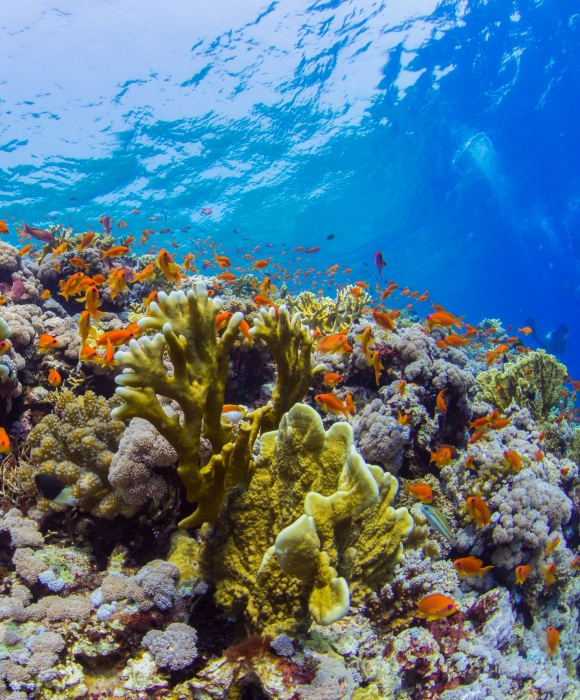
Coral, a natural born “multiplayer”
Corals are anything but loners. Instead, they are so called metaorganisms comprised of many symbiotic member species. Corals engage with photosynthetic algae that provide nutrients and energy. They associate with microorganisms and bacteria that play an important role in their metabolism and gene expression. Corals provide a habitat for countless plant and animal species, benefitting in turn from their lodgers. “Hundreds of thousands, if not millions, of species, most of whom have not yet been described, are part of the coral metaorganism community – and that’s not even counting the bacteria”, Christian Voolstra says. “Corals are true multiplayer organisms”.
The totality of a coral’s “native community” and all the organisms belonging to it, is called a holobiont. The community’s complete genetic information is called a holobiome. Christian Voolstra has set himself the goal of decoding the entire holobiome. He is particularly interested in the interaction between all the organisms that make up the holobiont, including the genetic exchange that takes place among them. Association with different bacteria, for example, is a potential mechanism for the coral metaorganism to acquire new genes and functions. Accordingly, exchanging the coral bacterial community could make adaptation possible within a matter of weeks, rather than years or decades.
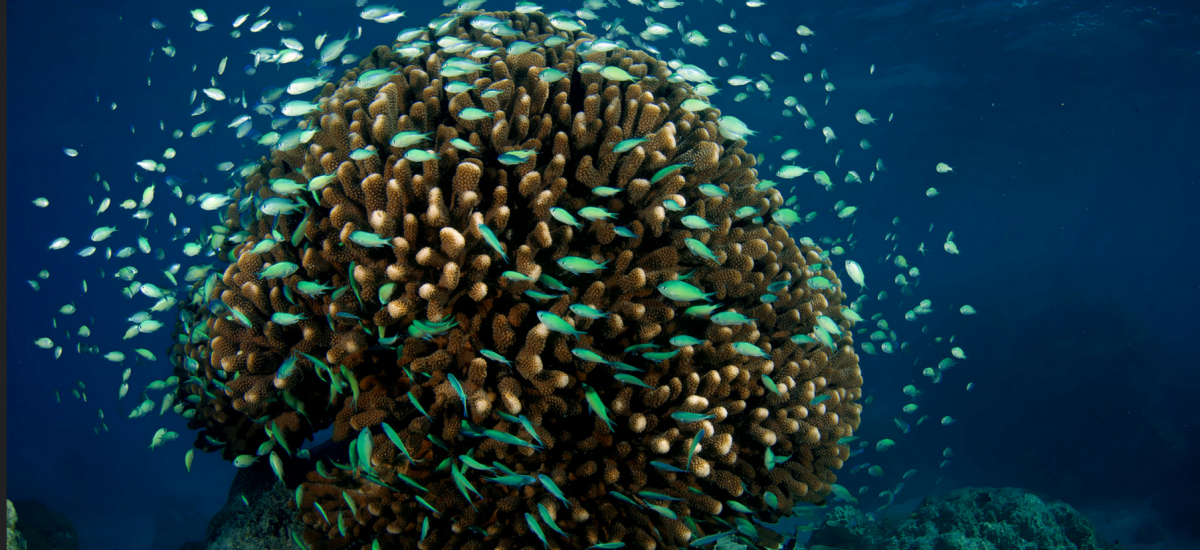
“Life depends on symbiosis”, Voolstra explains. Corals are specialists for engaging in symbiotic relationships. They are exceptionally adaptive as a result of the flexibility of the holobiont network, driven by environmental factors. “Corals are extremely well-adapted to existing environmental and climate conditions. They use their ecosystem extremely efficiently and are real powerhouses”, says Voolstra. This high level of specialization to their environments is what makes corals so successful but also highly vulnerable: They are extremely sensitive to even smallest changes to their prevailing environmental conditions.
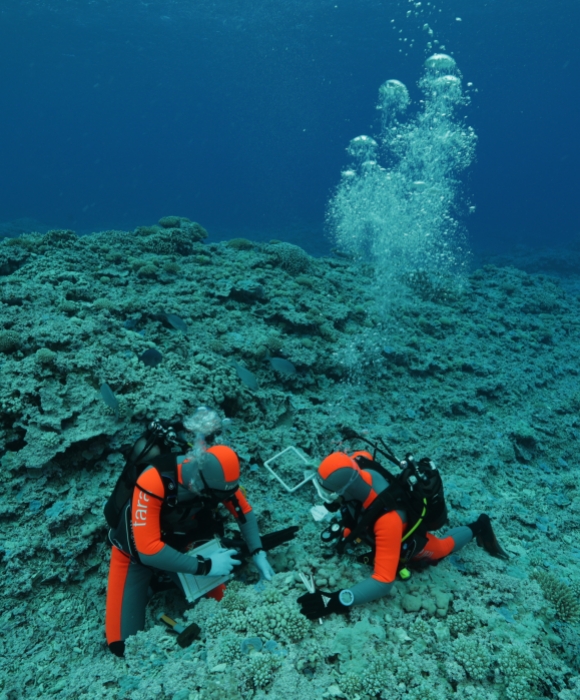
Just one degree Celsius
The colour of death is white for coral. “Coral bleaching” is a severe phenomenon, named after the color corals take on before they die. The cause of coral bleaching is warming ocean waters. As the water temperature rises, the symbiotic photosynthetic algae inside the coral cells that are essential for their survival are lost. Without these algae, coral do not obtain nutrients from photosynthesis. “Corals basically starve to death”, Voolstra describes. “They turn a pale, whitish colour, caused by loss of their photosynthetic algal symbionts, and eventually die of hunger”.
Extent of coral extinction
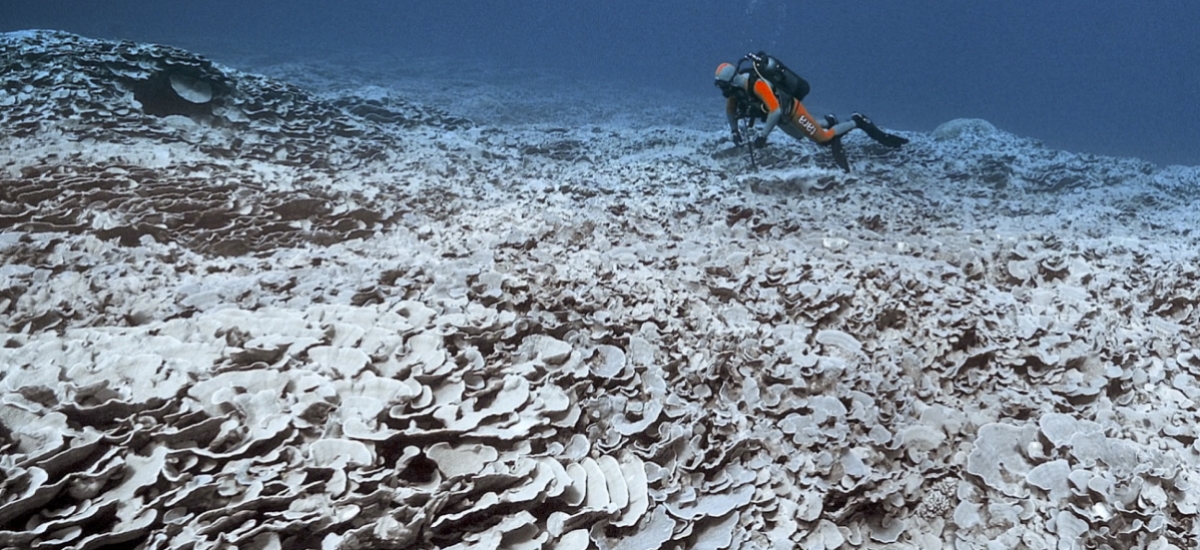
An increase of the water temperature by merely one degree Celsius is enough to cause coral bleaching in some regions. Even the most optimistic climate change projections project a global temperature increase of at least 1.5 degrees Celsius. That would be enough to cause almost total extinction of corals worldwide.
Coral “graveyards”
Already today, the Pacific has entire coral reefs affected by bleaching, absolute coral graveyards. Scientists call this mass coral bleaching, which has increased over the last decade. “Before the 1980s, there was no mass bleaching taking place. Even in 2010 the coral reefs were not in as bad a shape as they are today”, Christian Voolstra says. “From 2015 to 2017, the most drastic cases of mass bleaching so far took place. As a result, about a third of all coral worldwide disappeared”. Christian Voolstra witnessed the destruction in 2016 on board the Tara. “It is as if a third of the rain forest simply vanishes”, the biologist explains his impression of the massive die-off of coral. “On the board the Tara, we realized in many places that we were the last humans to see many of the corals”.
Less than half of the world’s corals are still in good condition. One third has been destroyed forever. At least half of the remaining coral will cease to exist in the coming 40 years. “Ninety-nine percent of all coral will be extinct by the next century if we cannot find a way to protect them”, Voolstra projects in line with estimates by the International Panel of Climate Change (IPCC, https://www.ipcc.ch).
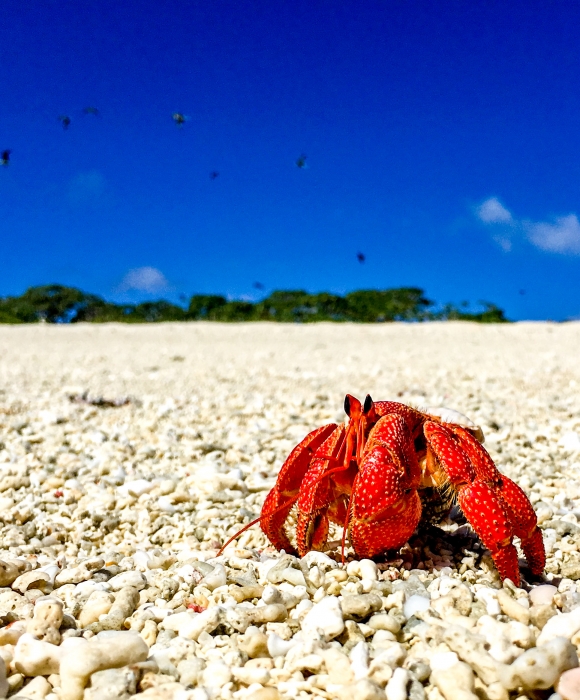
Essential for the existence of millions of species
When corals die, it has ripple effects. Countless other species are affected by the gradual disappearance of corals and the reefs they build. Coral reefs form the basis of a complex ecosystem that impacts millions of species: fish, birds, plants, microorganisms, and us humans. The loss of coral has fatal consequences for all these species and the entire marine ecosystem. “How much loss can an ecosystem handle before it loses its ecological function?” Christian Voolstra asks in reference to the “tipping points” of our planet’s natural networks, or the point at which an ecosystem is damaged forever.
“Studies show that ecosystems with many species are more stable than those with only a few”, the biologist explains. About 30% of marine biodiversity is found in coral reefs. If the corals go, then a central stabilizing factor for the oceans and the foundation for the existence of millions of species will also be lost.
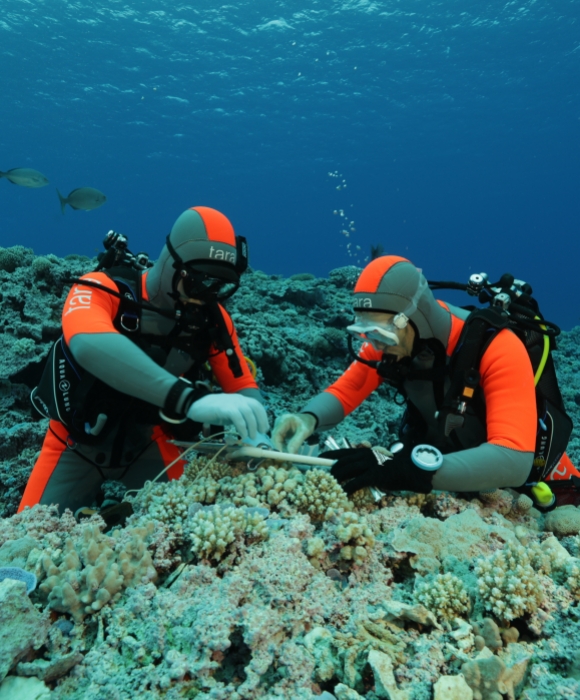
“Our generation must solve the issue of climate change.”
Nonetheless, Christian Voolstra remains optimistic about humanity having a chance to save the coral reefs: “We live in the most exciting time ever: before now, we did not have the scientific methods to do something. Now we have that chance. Our generation must solve the issue of climate change”. The Tara Pacific project will do its part. Christian Voolstra and his team would like to use the samples from the Pacific Ocean to find out what it takes to make corals the coming century and beyond.
One key could be the ability of corals to adapt genetically through flexible associations with microorganisms and their genetic material, Voolstra thinks. “By engaging in new associations with other microorganisms, corals can expand their genetic repertoire and adaptability – think of it as a hardware and software update. We are working on the mechanisms underlying this and how we might affect them”.
A research pursuit that will keep him busy for the years to come.
Sources, publications, image and video proofs
Publications
Serge Planes, Denis Allemand, Sylvain Agostini, Bernard Banaigs, Emilie Boissin, Emmanuel Boss, Guillaume Bourdin, Chris Bowler, Eric Douville, J. Michel Flores, Didier Forcioli, Paola Furla, Pierre E. Galand, Jean-François Ghiglione, Eric Gilson, Fabien Lombard, Clémentine Moulin, Stephane Pesant, Julie Poulain, Stéphanie Reynaud, Sarah Romac, Matthew B. Sullivan, Shinichi Sunagawa, Olivier P. Thomas, Romain Troublé, Colomban de Vargas, Rebecca Vega Thurber, Christian R. Voolstra, Patrick Wincker, Didier Zoccola, the Tara Pacific Consortium (2019) The Tara Pacific expedition—A pan-ecosystemic approach of the “-omics” complexity of coral reef holobionts across the Pacific Ocean." PLOS Biology 17(9): e3000483.
Link: https://journals.plos.org/plosbiology/article?id=10.1371/journal.pbio.3000483
Steven J. Robbins, Caitlin M. Singleton, Cheong Xin Chan, Lauren F. Messer, Aileen U. Geers, Hua Ying, Alexander Baker, Sara C. Bell, Kathleen M. Morrow, Mark A. Ragan, David J. Miller, Sylvain Forêt, ReFuGe2020 Consortium, Christian R. Voolstra, Gene W. Tyson & David G. Bourne (2019) A genomic view of the reef-building coral Porites lutea and its microbial symbionts. Nature Microbiology. doi:10.1038/s41564-019-0532-4
Link: https://www.nature.com/articles/s41564-019-0532-4
Publications (continued)
Maren Ziegler, Carsten G. B. Grupstra, Marcelle M. Barreto, Martin Eaton, Jaafar BaOmar, Khalid Zubier, Abdulmohsin Al-Sofyani, Adnan J. Turki, Rupert Ormond & Christian R. Voolstra (2019) Coral bacterial community structure responds to environmental change in a host-specific manner. Nature Communications 10, article 3092.
Link: https://www.nature.com/articles/s41467-019-10969-5
Todd C. LaJeunesse, John Everett Parkinson, Paul W. Gabrielson, Hae JinJeong, James Davis Reimer, Christian R. Voolstra, Scott R. Santos (2018) Systematic Revision of Symbiodiniaceae Highlights the Antiquity and Diversity of Coral Endosymbionts. Current Biology 28:2570-2580.e2576.
Link: https://www.sciencedirect.com/science/article/pii/S0960982218309072
Maren Ziegler, Francois O. Seneca, Lauren K. Yum, Stephen R. Palumbi, Christian R. Voolstra (2017) Bacterial community dynamics are linked to patterns of coral heat tolerance. Nature Communications 8, article 14213.
Link: https://www.nature.com/articles/ncomms14213
Further information :
Film "Our Ocean, Our Future" about coral reefs and the coral bleaching:
https://vimeo.com/220289475
„Bacteria make corals more resistant“ – from the research of Prof. Dr. Christian Voolstra:
https://www.uni-konstanz.de/universitaet/aktuelles-und-medien/aktuelle-meldungen/presseinformationen/presseinformationen/Bakterien-machen-Korallen-widerstandsfaehiger/
Further information about the „Tara Pacific Expedition“:
https://oceans.taraexpeditions.org/en/m/environment/ocean-climate/new-expedition-tara-pacific
Picture proof
Page 1 – Anna Roik
Page 4 – Tara Pacific
Page 8 – 1: Vincent Hilaire, 2: Vincent Hilaire, 3: Claudia Pogoreutz , 4: Claudia Pogoreutz, 5: Ryan McMinds
Page 11 – Pete West
Page 22 – 1: Vincent Hilaire, 2: Pete West , 3: Pete West, 4: Claudia Pogoreutz
